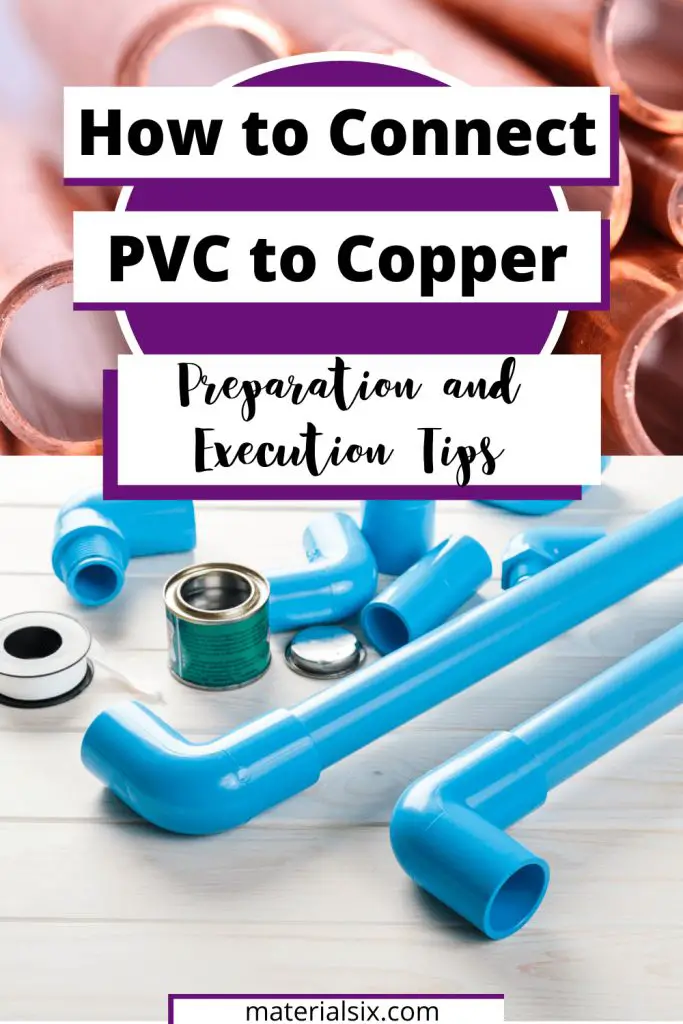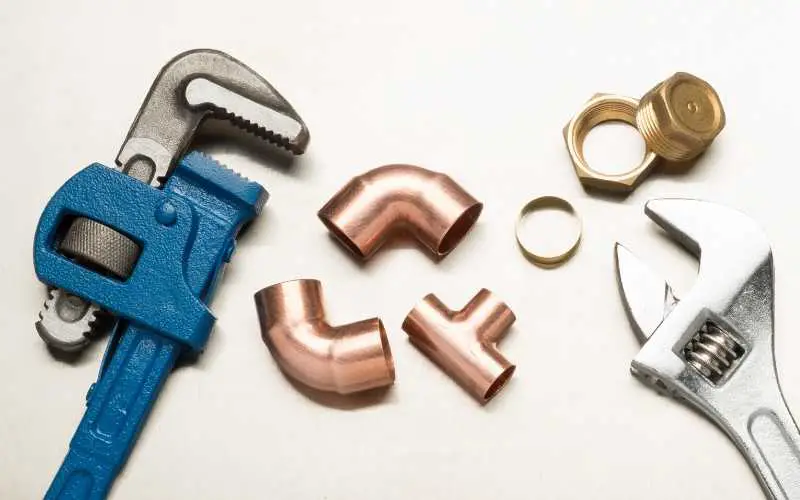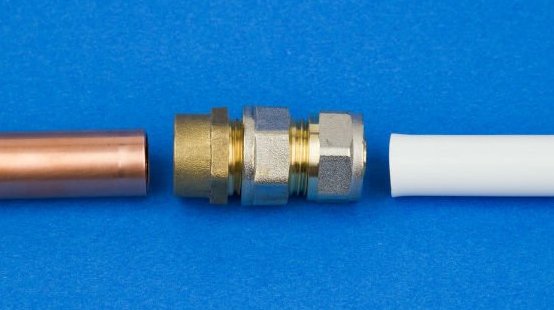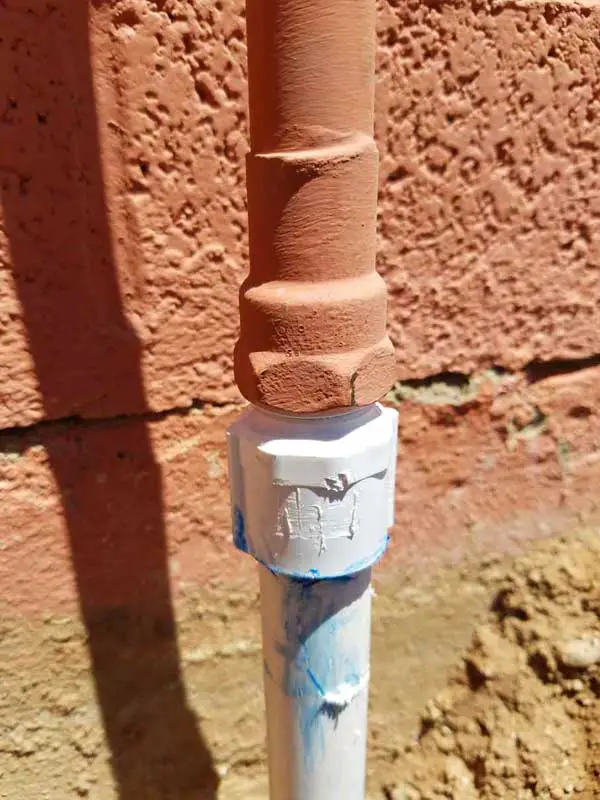You found this morning that your kitchen sink was leaking and decided to fix it by yourself. Going to the hardware and home store, you did not find any similar or matching pipes to your 10-year-old copper plumbing system.
Don’t panic! PVC can be one of the best and friendliest options for your budget. Easy DIY tips to connect PVC to copper plumbing lines are also widely searchable and doable.

Why PVC?
![letsFix 3/4" PVC Pipe, DIY PVC Projects for the Home, Garden, Greenhouse, Farm and Workshop, Sch. 40 Furniture Grade, White [40" x 10 Pack] letsFix 3/4" PVC Pipe, DIY PVC Projects for the Home, Garden, Greenhouse, Farm and Workshop, Sch. 40 Furniture Grade, White [40" x 10 Pack]](https://m.media-amazon.com/images/I/41HsYThf9cL._SL160_.jpg) PVC – polyvinyl chloride –is a type of plastic pipe commonly used for drinking and wastewater plumbing due to its higher resistance level to corrosion. Compared to metal, this kind of material is a better insulator to reduce heat loss.
PVC – polyvinyl chloride –is a type of plastic pipe commonly used for drinking and wastewater plumbing due to its higher resistance level to corrosion. Compared to metal, this kind of material is a better insulator to reduce heat loss.
PVC can stretch more, thus reduce the risk of bursting when water freezes (sub-zero temperatures). Due to its ductile characteristic, it is more bendable and routable through wall spaces and floors.
More interestingly, PVC is budget-friendly or less costly compared to other pipe materials.
What You Need Before Starting

Before you put the steps of how to connect PVC to copper into practice, you need some necessary preparations. By doing this, you can save more time and avoid any frustration.
You will need basic plumbing tools like a pipe wrench, wrench set, adjustable spanner, 4-in-1 screwdriver, cinch clamp tool, slip joint pliers, plumber tape, tube cutter, and wire brush.
Regardless of any copper to PVC pipe connecting method you choose, you will also need some required materials. For example, pipe adapter, coupling and fittings, pipe glue, solder and flux kit, and pipe dope. Not to forget, some old towels, emery cloths, or rags.
Although plumbing fixing is not rocket science, you still need to understand the basics. There are various transitional fittings to pipe connections. Each of them has a different way to install it. For example, some fittings require you to use specific crimping tools, while others need simply a wrench or pliers. Several fittings need you to solder them, while others need simply a push.
Now you are ready for the execution of joining copper to PVC plumbing fixtures.
How to Connect PVC to Copper

Don’t forget to turn off the main water supply or the in-live valve connected to your fixing pipes. It will help you from getting soaked when you open the joint. Turn on the taps to let the excess water flow out.
The following are three examples of countless PVS to copper pipe connecting methods you can choose.
1. The use of push-fit fittings
Now let’s start with the simplest way, namely by using push-fit fittings. This method does not require soldering or gluing, nor clamping or crimping.
Two examples of manufactured push-fit fittings are SharkBite (thus also called Sharkbiting fitting) and BlueFin.
This type of copper-to-PVC fitting can accommodate a copper pipe on one side and a PVC pipe on the other side. You can simply push the pipe into the fitting to seal it and make it watertight connected, thus locked. If you need to adjust, you can just pull the pipe from the fitting.
2. Welding and/or Gluing
The second method is perhaps the most common yet not the best in joining the PVC to copper pipelines. Why? Because it requires high skills and also various tools. However, everything is possible.
For gluing task: you will need the correct glue since using the wrong type of sealant will only damage the valve utilized. You can go to the hardware store and look for the specific-formulated adhesive.
Use a brush and a rag to clean both pipes. Apply the glue evenly to create a bonding surface where you want to connect them. Place them for three minutes and hold them together for one minute. Give pressure on them and allow them for at least 48-hour drying.
For soldering or welding tasks, you have to solder a female-threaded fitting onto the copper pipe. Next, you need to screw in a male-threaded plastic fitting. And finally, finish it up by gluing the plastic pipe to the plastic fitting joints.
Be sure that you make it leak-proof as you cannot tighten it back if something has gone wrong.
3. The Use of Threaded Adapters
Many consider this method of joining copper to PVC pipes as the most likely the best one.
The most crucial thing to remember is that you have to use a female metal end with a male plastic end. The reason is that a male metal adapter tends to damage (crack) a female plastic adapter. In other words, if you push too far, it leads to stress.
You will need a pipe dope (or a Teflon tape) to connect and tighten the threaded copper to PVC joints. A second reminder here, you cannot over-tighten the two joints and apply too much tape on them since they tend to break the plastic-adapted edges.

Conclusion
That concludes the three ways how to connect PVC to copper plumbing lines. More methods are available that require different tools, materials, skills, and levels of confidence. For the DIY project, plumbing fixing sometimes may lead to surprises. If you have 100% of confidence, then you are ready to begin. But if not, it is better to call the experts.
More from Materialsix.com:




